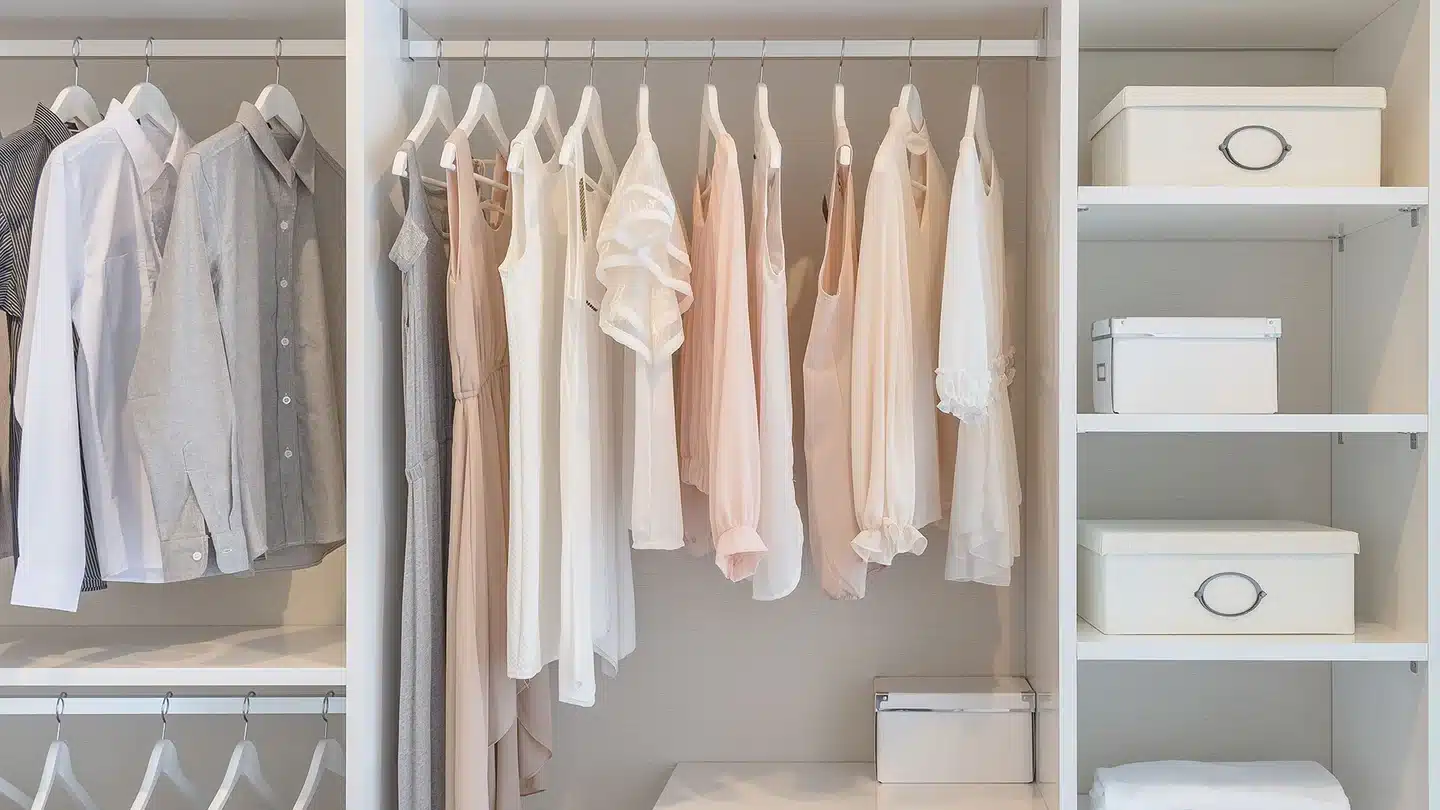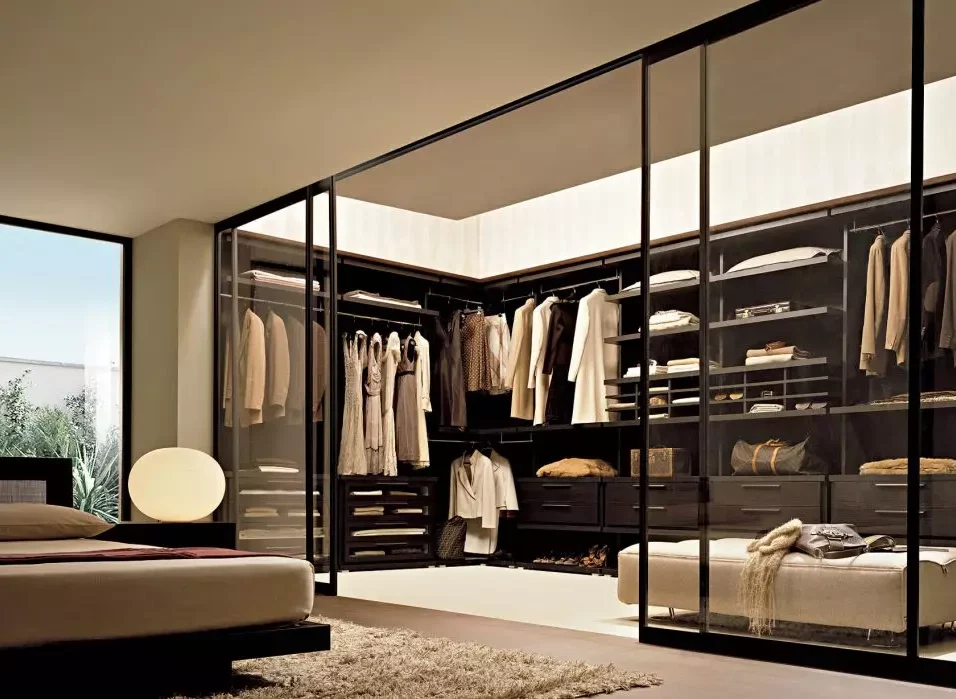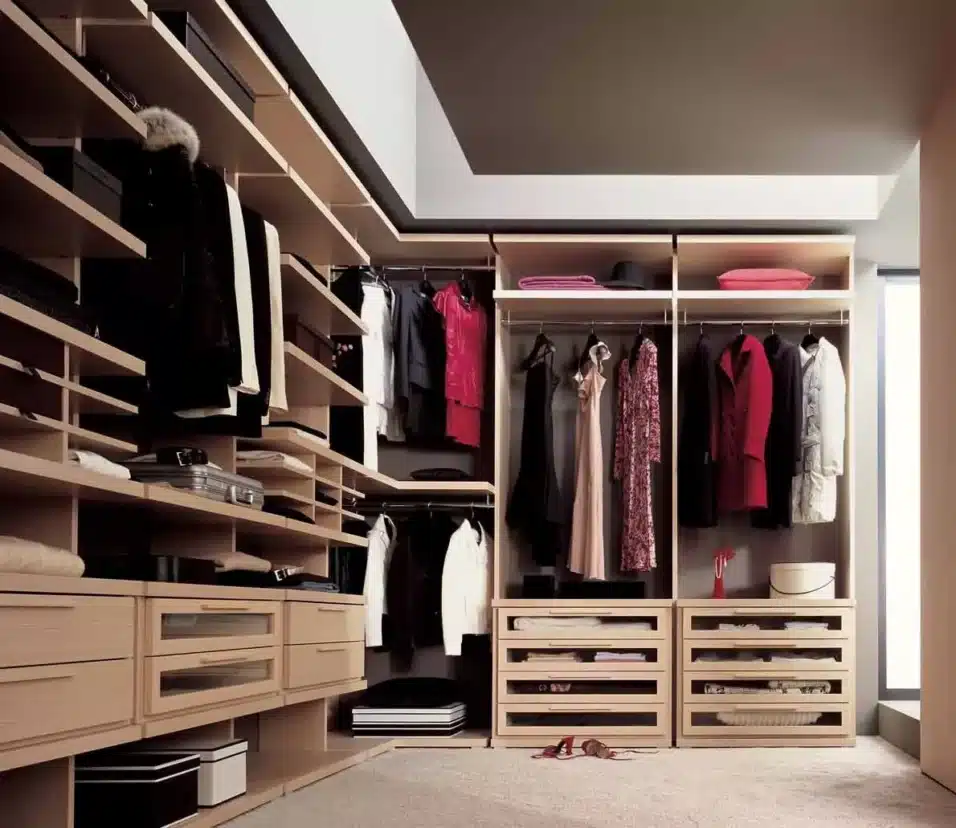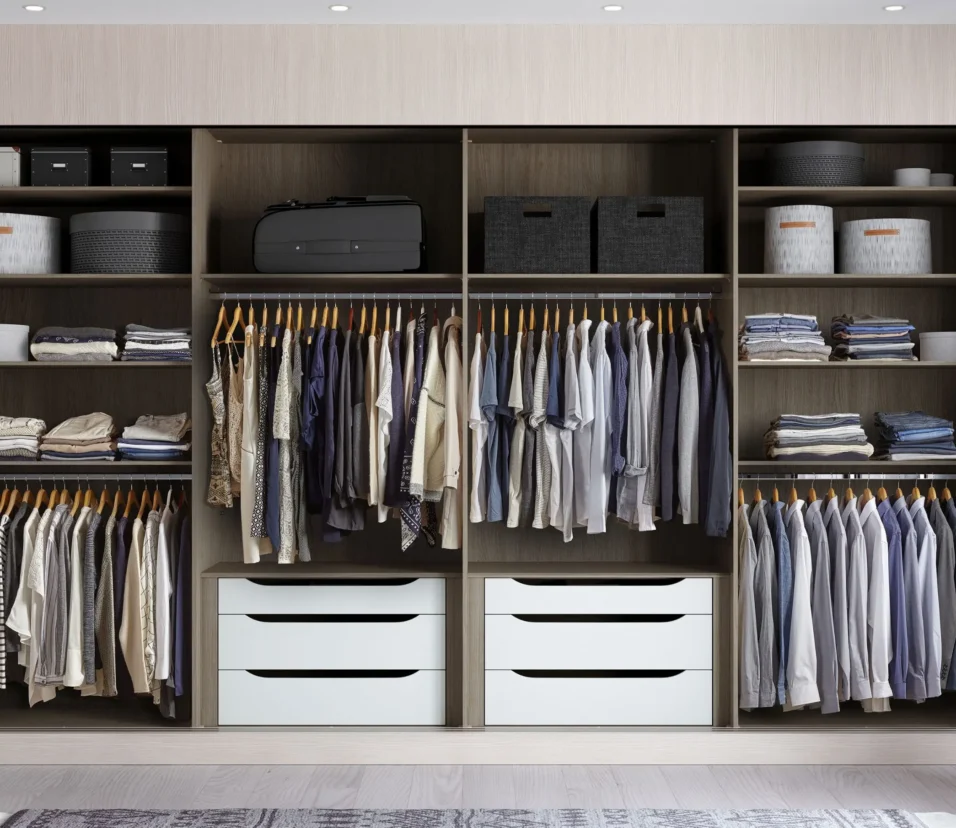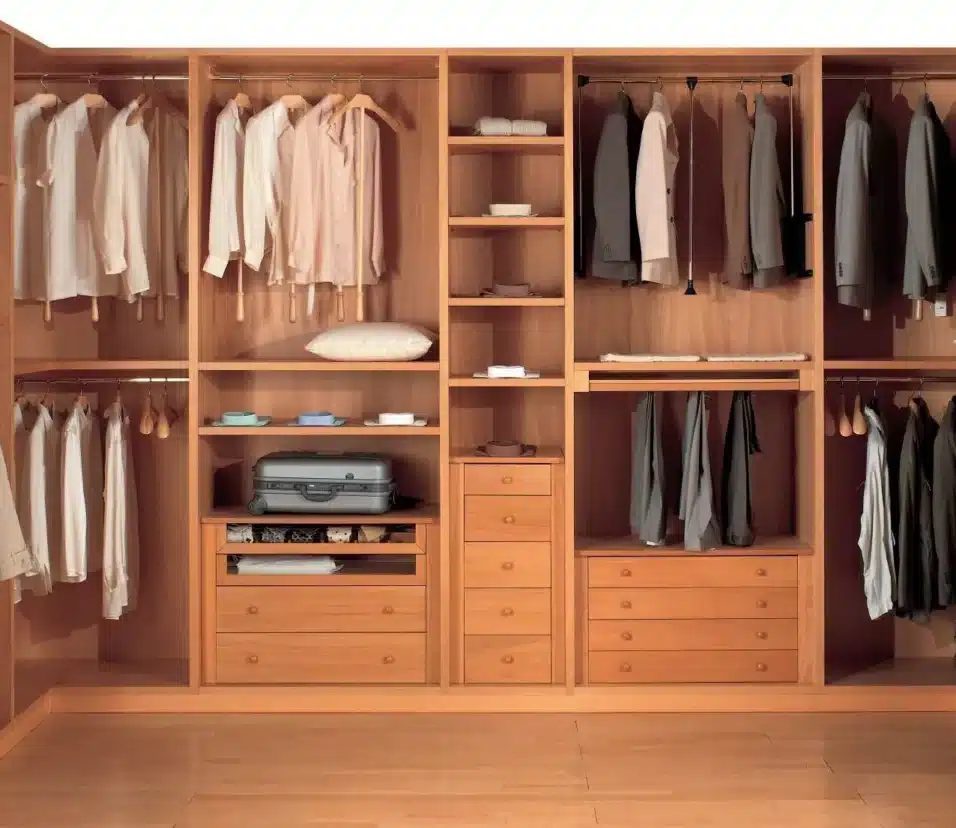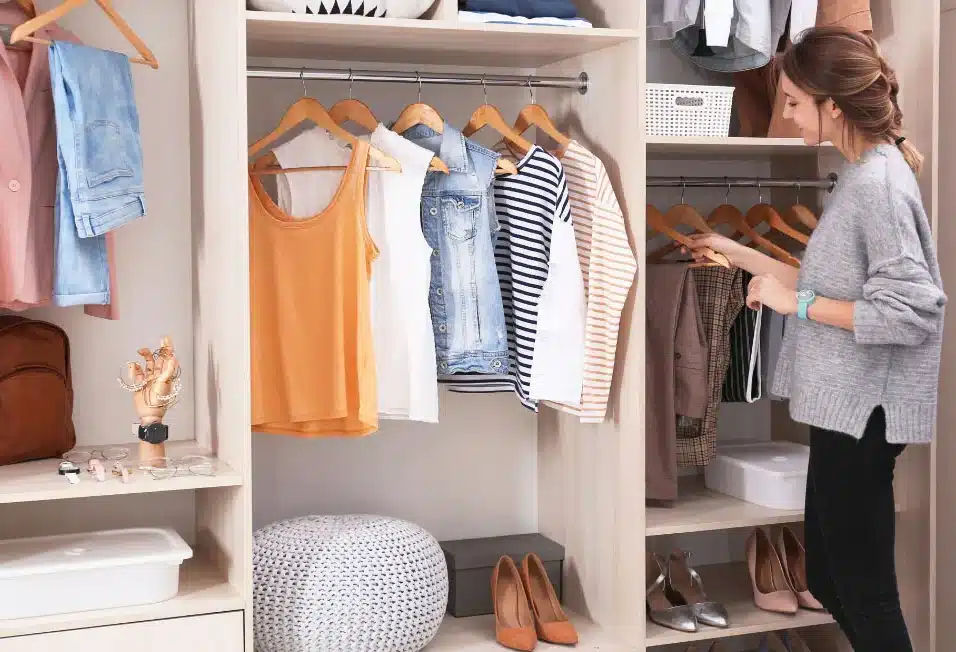How To Rebuild Your Wardrobe
Introduction
How To Rebuild Your Wardrobe Finding your fashion balance can be both exciting and scary in a world where styles and trends are always changing. The goal of this guide is to help you find your way through the complicated putting together a new outfit with style and purpose.
There are many clothes in your closet that show the world who you are and how you do things. This guide is meant to give you strength whether you’re starting a new phase in your life, trying to improve your appearance, or being open to a new point of view. And we believe that a well- closet is more than just a bunch of clothes; it’s a way to show off your personality and confidence.
“How to Rebuild Your Wardrobe” stresses quality, flexibility, and sustainability at a time when people are buying things with care is becoming more popular. This guide will help you put together an outfit by helping you look at the clothes you already have, figure out your style, and make smart decisions. boxes that stands the test of time and aligns with your values.
No matter how much you know about fashion or how new you are to it, this journey is made to help you. Discover the fun of wearing statement pieces and how to mix and match them. Let your clothes choices take you on a journey of self-expression. Get ready to go on an adventure that will make you feel better. Your new clothing will reflect your true self and give off an air of confidence and purpose in every outfit.
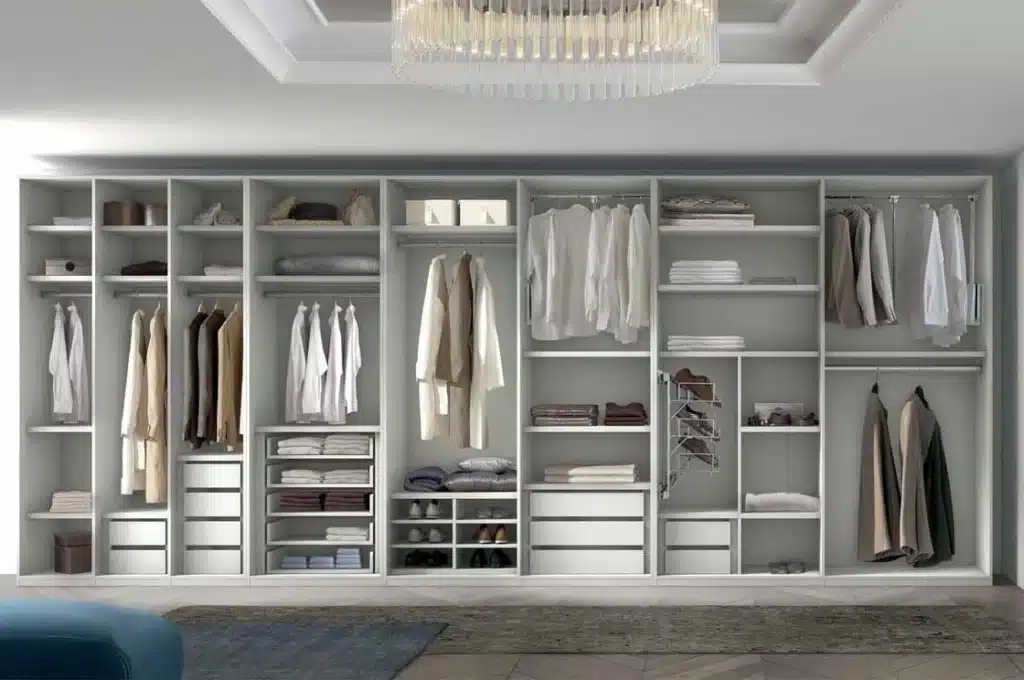
How do I completely redo my wardrobe?
How Do I Completely Update My Wardrobe
- Step 1: Put everything in a pile so you can see it all in one place.
- Step 2: Categorize your clothes.
- Step 3: Look for gaps and missing styles.
- Step 4: Update outdated styles.
- Step 5: Re-evaluate.
Changing everything in your closet is a fun way to update your style, get rid of unnecessary items, and put together an outfit that really shows off your personality and tastes. Here is a step-by-step plan to help you begin:
Assess Your Current Wardrobe:
Begin by taking a thorough inventory of your current wardrobe. Identify items that you love, those that you rarely wear, and pieces that no longer resonate with your style.
Define Your Style:
Consider the kind of style you want to embody. Browse fashion magazines, social media, and online platforms for inspiration. Pinpoint the colors, patterns, and silhouettes that appeal to you.
Set Goals:
Determine the purpose of your new wardrobe. Are you aiming for a more professional look, a casual vibe, or a mix of both? Setting goals will help guide your choices.
Declutter:
Let go of items that no longer serve your style or fit properly. Donate, sell, or recycle clothing you no longer need. This step is crucial for making room for your new pieces.
Create a Wishlist:
Make a list of essential items you need to build a versatile wardrobe. Include basics like jeans, neutral tops, and versatile outerwear. Prioritize quality over quantity.
Shop Intentionally:
As you shop for new items, keep your Wishlist in mind. Choose pieces that align with your defined style and complement your existing wardrobe. Opt for timeless and versatile pieces that can be mixed and matched.
Consider Quality:
Invest in well-made clothing that will withstand wear and tear. Quality pieces may be more expensive upfront, but they tend to last longer and provide better value over time.
Mix and Match:
Aim for a wardrobe where most items can be easily mixed and matched. This will give you more outfit options with fewer pieces.
Accessories and Footwear:
Don’t forget to update your accessories and footwear to match your new style. These elements can significantly impact your overall look.
Stay Organized:
Once you have your new wardrobe, keep it organized. Use hangers, dividers, and storage solutions to maintain a clutter-free space.
Build Gradually:
Remember that rebuilding your wardrobe is a process that doesn’t need to happen overnight. Take your time to make thoughtful choices and build a collection that truly resonates with you.
Maintenance:
Regularly assess your wardrobe to keep it fresh and in line with your evolving style. Rotate items seasonally and continue to edit as needed.
Redoing your wardrobe is an opportunity to express yourself and enhance your confidence. Enjoy the journey of discovering your new style and creating a collection that makes you feel your best.
Where do I start rebuilding my wardrobe?
Put together a strong base: Choose basic, well-made clothes that you can wear in many ways. These will be the foundation of your outfit. These basic pieces, like fitted pants, white shirts, and jeans that fit well, should be easy to mix and match, giving you a lot of outfit options.
It can be overwhelming to start rebuilding your clothing, but if you do it in a planned way, you can enjoy the process and be successful. Here is a step-by-step plan to get you started:
Self-Reflection and Inspiration:
Think about your present style and what you’d like to change or improve about it. To get style ideas, read fashion magazines, look at fashion blogs, and even look at people whose style you like.
Define Your Personal Style:
Figure out the style features that you like the most. Do you like a classic, simple, bohemian, trendy, or casual style? Having a clear idea of your own style will help you make decisions and make shopping easy.
Purge and Declutter:
Take time to go through your current wardrobe and remove items that no longer align with your desired style or fit properly. Donate, sell, or recycle items that you no longer wear or love.
Assess Essentials:
Make a list of basic wardrobe essentials, like jeans that fit well, tops that can be worn with different outfits, a little black dress, good outerwear, and shoes that are comfy. These things are what your new wardrobe will be made of.
Set a Budget:
Determine a budget for rebuilding your wardrobe. Focus on investing in key pieces that are versatile and of good quality. Prioritize items you’ll wear frequently and that will stand the test of time.
Shop for Staples:
Begin shopping for the essential items you’ve identified. Look for timeless pieces that can be mixed and matched to create various outfits. Pay attention to fit and quality.
Experiment with Trends:
While building a timeless wardrobe, don’t be afraid to incorporate a few current trends that resonate with your personal style. Trends can add a contemporary touch to your looks.
Accessories and Shoes:
Update your accessories and footwear to complement your new wardrobe. Well-chosen accessories can elevate even the simplest outfit.
Try Everything On:
When shopping, make sure to try on items before purchasing to ensure they fit well and suit your body type.
Mix and Match:
As you add new items, experiment with mixing and matching them with your existing pieces. This will give you a better understanding of how versatile your wardrobe is becoming.
Edit and Adapt:
Regularly assess your wardrobe. Remove items that you’re not wearing and make note of any gaps that need to be filled.
Enjoy the Process:
Rebuilding your wardrobe is a journey, not a destination. Enjoy the process of curating a collection that represents your evolving style and personality.
Remember, the key is to build a wardrobe that reflects your individuality and makes you feel confident. Take your time, make intentional choices, and have fun rediscovering your style along the way.
How to do a wardrobe makeover?
5 wardrobe makeover ideas to simplify your style
- Get rid of anything that doesn’t currently fit.
- Get rid of anything that you have not worn in the last year.
- Keep the pieces you really love, and wear them often.
- Create outfits.
- Keep colour in mind.
A wardrobe makeover is a fantastic way to refresh your style, declutter your closet, and create a collection of clothing that truly represents you. Here’s a step-by-step guide to help you achieve a successful wardrobe makeover:
Set Your Intention:
Start by defining your goals for the makeover. Do you want to update your professional attire, create a more casual wardrobe, or strike a balance between the two? Having a clear intention will guide your decisions.
Assess Your Current Wardrobe:
Empty your closet and go through each item. Sort them into categories: Keep, Donate/Sell, and Unsure. Be honest about what you wear and what truly resonates with your style.
Define Your Personal Style:
Consider the style you want to embrace. Look for inspiration in magazines, social media, and fashion blogs. Identify patterns, colors, and silhouettes that attract you.
Create a Mood Board:
Collect images that represent your desired style and create a mood board. This visual reference will help you stay focused while shopping and putting together outfits.
Purge Unwanted Items:
Donate or sell items that no longer align with your style or fit well. Letting go of what you don’t use will make space for pieces you truly love.
Identify Staples:
List essential items you need, such as quality jeans, versatile tops, jackets, and shoes. These staples form the foundation of your new wardrobe.
Shop Mindfully:
Invest in high-quality basics that fit your style and can be mixed and matched. Prioritize pieces that will work across different occasions.
Try New Styles:
While staying true to your style, don’t be afraid to experiment with new trends and silhouettes that appeal to you.
Accessorize:
Enhance your outfits with accessories like scarves, jewelry, and bags. Accessories can transform an outfit and add a personal touch.
Mix and Match:
Experiment with combining different pieces to create a variety of outfits. This helps you maximize the versatility of your new wardrobe.
Organize Your Closet:
Arrange your clothes in a way that makes it easy to see and access your options. Group similar items together for a neat and efficient layout.
Maintenance and Review:
Regularly assess your wardrobe to keep it aligned with your style and needs. Remove items you no longer wear and make note of any gaps.
Donate and Recycle:
Continue to donate or recycle clothing that no longer serves you. This ongoing process maintains the freshness of your wardrobe.
Confidence and Enjoyment:
Wear your new outfits with confidence and enjoy the process of expressing yourself through your curated wardrobe.
Remember, a wardrobe makeover is about aligning your clothing choices with your personality and lifestyle. Take your time, be patient with yourself, and relish the journey of creating a wardrobe that brings you joy and boosts your self-confidence.
How do you redo a wardrobe on a budget?
7 budget-friendly ways to update a wardrobe
- Investigate your closet (and others’) Take stock of what’s already in your closet and drawers.
- Turn pants into shorts or capris.
- Invest in basics.
- Set your budget and shopping plan.
- Shop from the back.
- Stick to a neutral color palette.
- Shop thrift sales or consignment.
Redoing your wardrobe on a budget requires strategic planning and smart shopping choices.
Here are some tips to help you achieve a stylish wardrobe makeover without breaking the bank:
Assess Your Wardrobe: Take stock of what you already have. Identify items that can be repurposed or restyled to suit your new look.
Set a Budget: Determine how much you’re willing to spend on your wardrobe makeover. Having a clear budget will help you make conscious decisions while shopping.
Prioritize Essential Pieces: Focus on acquiring versatile basics that can be mixed and matched. Prioritize items like well-fitting jeans, neutral tops, and classic outerwear.
Thrift and Secondhand Shopping: Explore thrift stores, consignment shops, and online platforms for gently used clothing. You can find quality pieces at a fraction of the cost.
Sales and Clearance: Keep an eye out for sales, seasonal discounts, and clearance racks. This is a great way to snag quality items at reduced prices.
Swap or Trade: Organize clothing swaps with friends or attend local clothing swap events. You can exchange pieces you no longer need for items that align with your new style.
DIY and Upcycling: Get creative with DIY projects to update or customize your existing items. Adding patches, distressing jeans, or altering clothing can give them a fresh look.
Focus on Accessories: Accessories like scarves, belts, and statement jewelry can elevate your outfits without spending a lot. They’re affordable ways to add flair to your look.
Shop Off-Season: Purchase items that are out of season for substantial discounts. Think about buying winter clothes in the summer and vice versa.
Capsule Wardrobe Approach:
Create a capsule wardrobe with a limited number of well-coordinated pieces. This approach encourages mixing and matching, reducing the need for excessive shopping.
Sell or Swap Unused Items: Sell clothing you no longer wear online or at consignment shops to earn some extra money for your new wardrobe. You can also consider swapping with friends.
Discount and Outlet Stores: Explore discount retailers and outlet stores, which often offer brand-name items at lower prices.
Quality over Quantity: Invest in a few high-quality, versatile pieces instead of buying numerous cheaper items that might not last long.
Layer and Experiment: Use layering and creative styling to make the most of your wardrobe. Mix and match items in different ways to create unique outfits.
Stay Organized: Keep your wardrobe organized so you can easily see what you have and avoid buying duplicates.
Remember, redoing your wardrobe on a budget requires patience and resourcefulness. By being mindful of your spending, making strategic choices, and getting creative, you can achieve a stylish and revamped wardrobe without straining your finances.
How to build an expensive wardrobe?
Fabric choices are extremely important in creating a luxurious wardrobe. Top picks are silks, cashmere, linen, wool, fur and leather. Of course these are often the most expensive items.
Building an expensive-looking wardrobe doesn’t necessarily mean spending a fortune. It’s about making thoughtful choices, investing in quality pieces, and creating a curated collection that exudes sophistication. Here’s how to build an upscale wardrobe:
Invest in Timeless Basics: Start with high-quality essentials like well-fitted jeans, tailored blazers, classic white shirts, and versatile dresses. These pieces form the foundation of an expensive-looking wardrobe.
Focus on Quality: Opt for well-made garments that are constructed with attention to detail and durable materials. Quality fabrics and craftsmanship often convey a more luxurious appearance.
Choose Neutral Colors: Incorporate a neutral color palette of blacks, whites, grays, and earth tones. These colors are timeless and can be easily mixed and matched.
Tailoring is Key: Proper fit is essential for an upscale look. Invest in tailoring to ensure that your clothes fit perfectly, enhancing your overall appearance.
Pay Attention to Fabric: Look for fabrics like silk, wool, cashmere, and high-quality cotton. Luxurious fabrics instantly elevate the feel of an outfit.
Accessorize Strategically: Invest in classic, high-quality accessories such as leather handbags, timeless watches, and elegant jewelry. These details can enhance your overall look.
Minimalist Approach: Embrace a minimalist aesthetic, focusing on clean lines and simplicity. A less-is-more approach often gives off an air of sophistication.
Avoid Overly Trendy Pieces: While incorporating trends can be fun, an upscale wardrobe is built on enduring style. Prioritize classic pieces over fleeting trends.
Designer Resale and Vintage: Explore consignment stores, online platforms, and vintage shops for pre-owned designer pieces. This allows you to own designer items at a fraction of the original cost.
Luxury Shoe Collection:
Invest in well-crafted, timeless footwear such as leather pumps, classic loafers, and elegant boots. Shoes can significantly elevate the perceived value of your outfit.
Care for Your Clothing: Properly care for your garments to maintain their quality and appearance. Follow care instructions, store items correctly, and consider professional cleaning when needed.
Confidence and Poise: An expensive wardrobe is not just about clothing; it’s also about how you carry yourself. Confidence, posture, and grace contribute to an overall polished look.
Versatile Accessories: Select accessories that can be worn with multiple outfits. A high-quality belt, silk scarf, or a fine leather wallet can enhance your style.
Subtle Branding: Choose items with subtle branding or no visible logos. The focus should be on the quality and design of the piece, not the brand name.
Mix High and Low: You don’t need to exclusively own designer items. Mix high-end pieces with well-chosen affordable ones to create a balanced and elevated look.
Building an expensive-looking wardrobe is about making informed choices and curating pieces that stand the test of time. By prioritizing quality, fit, and timeless style, you can create an upscale wardrobe that reflects your sophisticated taste without the need for excessive spending.
How do I style my existing wardrobe?
Find clothes that work together, and then mix them up for different looks. Don’t be afraid to try new combinations. Wear that casual blouse with a skirt instead of with your jeans, or wear that smart dress blouse you’ve been saving for best and pair it with your jeans.
Styling your existing wardrobe is a creative and cost-effective way to breathe new life into your outfits. Here are some tips to help you maximize the potential of the clothes you already have:
Reorganize Your Closet:
Start by organizing your wardrobe. Group similar items together, arrange by color, or use a system that makes it easy to see what you have.
Assess Your Pieces:
Take a critical look at each item. Determine which ones you still love, which fit well, and which can be repurposed.
Mix and Match:
Experiment with combining different pieces to create fresh outfits. Mix colors, patterns, and textures to create visually interesting ensembles.
Layering:
Use layering to add depth to your outfits. Combine tops, sweaters, jackets, and scarves for a multi-dimensional look.
Accessorize:
Accessories can transform an outfit. Add statement jewelry, belts, scarves, and hats to elevate your style.
Belt It Up:
Belts can cinch dresses, tops, and cardigans to create a flattering silhouette and add a stylish touch.
Try New Combinations:
Don’t hesitate to pair items that you haven’t worn together before. You might discover new outfit combinations you hadn’t thought of.
Experiment with Silhouettes:
Play with proportions by tucking in shirts, cuffing pants, or tying knots to create interesting shapes.
Repurpose:
Think creatively about how to repurpose items. Can a dress be worn as a tunic with leggings? Can a shirt be layered under a sweater as a mock collar?
Play with Accessories:
Change the vibe of an outfit by swapping out accessories like shoes, bags, and jewelry.
Casual to Formal:
Transition pieces from day to night by changing footwear and adding more sophisticated accessories.
Embrace Statement Pieces:
Showcase bold or statement items by pairing them with neutral pieces that let them stand out.
Get Inspired:
Look for inspiration on fashion blogs, magazines, Pinterest, or even on social media. Adapt ideas to suit your personal style.
Alterations:
If an item doesn’t fit perfectly, consider getting it tailored to ensure a flattering fit.
Photograph Your Outfits:
Take photos of your outfits to reference later. This helps you remember successful combinations and saves time when getting dressed.
Be Confident:
Remember that confidence is key to pulling off any outfit. Own your style choices with self-assuredness.
Styling your existing wardrobe is an opportunity to unleash your creativity and showcase your personal style. By experimenting with different combinations and accessorizing thoughtfully, you can discover new and exciting ways to wear the clothes you already own.
What is a good budget for a wardrobe?
According to Dunn, you should spend 5% of your monthly income on clothing. To find the exact dollar amount you should be spending per month, multiply your take-home pay by 0.05. For example, if your monthly take-home pay is $3000, you should spend around $150 per month on clothing.
The ideal budget for a wardrobe can vary widely based on individual preferences, lifestyle, and financial circumstances. However, there are some general guidelines you can consider when budgeting for your wardrobe:
Percentage of Income:
A common rule of thumb is to allocate around 5-10% of your monthly income for clothing and fashion-related expenses. This percentage can be adjusted based on your priorities and financial goals.
Prioritize Quality Over Quantity:
It’s better to invest in a few high-quality, versatile pieces than to spend money on numerous low-quality items. Quality pieces tend to last longer and provide better value in the long run.
Create a Capsule Wardrobe:
If you’re looking to build a functional and stylish wardrobe on a budget, consider adopting a capsule wardrobe approach. This involves curating a smaller collection of versatile, mix-and-match items.
Seasonal Updates:
Budget for seasonal updates to your wardrobe. Allocate funds for new pieces that align with the changing weather and trends.
Splurge Wisely:
Set aside a portion of your budget for splurge-worthy items that you truly love and that will stand the test of time.
Shop Sales and Discounts:
Take advantage of sales, discounts, and promotional events to stretch your budget further.
Thrift and Secondhand:
Consider incorporating thrift and secondhand shopping into your wardrobe-building strategy. You can find quality pieces at a fraction of the cost.
Reallocate Funds:
If you’re committed to refreshing your wardrobe, consider reallocating funds from less important areas of your budget to fashion-related expenses.
Evaluate Lifestyle:
Your lifestyle influences your wardrobe needs. If you have a more formal job or attend frequent events, you might allocate a larger budget for professional and dressy attire.
Regular Maintenance:
Allocate a small portion of your budget for ongoing wardrobe maintenance, such as alterations, repairs, and cleaning.
Personalize Your Budget:
Ultimately, your wardrobe budget should align with your financial situation, goals, and priorities. What matters most is that you’re comfortable with your spending choices.
Remember that there’s no one-size-fits-all answer to what constitutes a “good” wardrobe budget. It’s important to find a balance that suits your personal style, values, and financial situation. Tailor your budget to your individual needs, and be mindful of how you’re allocating your resources to build a wardrobe that reflects your unique taste and lifestyle.
How often should I redo my wardrobe?
Whether it’s a new pair of classic jeans or shoes that are on-trend-yet-timeless, it makes sense to give yourself a small update every year. You can even swap out items that no longer work by donating or selling them.
The frequency of redoing your wardrobe can vary depending on several factors, including personal preferences, lifestyle changes, fashion trends, and the quality of your clothing.
Here are some considerations to help you determine how often to refresh your wardrobe:
Lifestyle Changes:
Major life events like transitioning to a new job, moving to a different climate, or experiencing changes in your personal life can prompt the need for a wardrobe update.
Seasonal Updates:
Many people choose to refresh their wardrobe seasonally, adapting to changes in weather and trends. This could mean four updates per year – spring, summer, fall, and winter.
Fashion Trends:
If you’re particularly interested in staying on top of current fashion trends, you might consider updating your wardrobe more frequently to incorporate new styles.
Quality of Clothing:
Higher-quality clothing tends to last longer and withstand trends better. If you invest in durable pieces, you may need to update your wardrobe less often.
Capsule Wardrobe Approach:
If you’ve adopted a capsule wardrobe strategy, you might refresh your wardrobe less frequently, focusing on carefully chosen, timeless pieces.
Wear and Tear:
Regular wear and washing can cause clothing to deteriorate over time. As items start showing signs of wear and tear, you can gradually replace them.
Personal Growth:
As your personal style evolves, you might want to update your wardrobe to reflect your changing tastes and preferences.
Budget Constraints:
Your budget might influence how often you can realistically redo your wardrobe. Be mindful of finding a balance between financial considerations and your wardrobe needs.
Regular Assessment:
Regularly assess your wardrobe to identify pieces that you no longer wear or that no longer align with your style. This will help you determine when it’s time for an update.
Quality Over Quantity:
Emphasizing quality over quantity in your wardrobe can lead to fewer updates, as higher-quality items tend to endure.
Key Events:
Special occasions or events that require specific attire might prompt a wardrobe update. Examples include weddings, vacations, or formal gatherings.
In the end, there is no one right answer for how often you should change your clothes. You should find a pace that works for your lifestyle, personal tastes, and everyday needs. Pay attention to what your present wardrobe is telling you and make changes as needed to make sure that your clothes are still useful, stylish, and in line with your tastes.
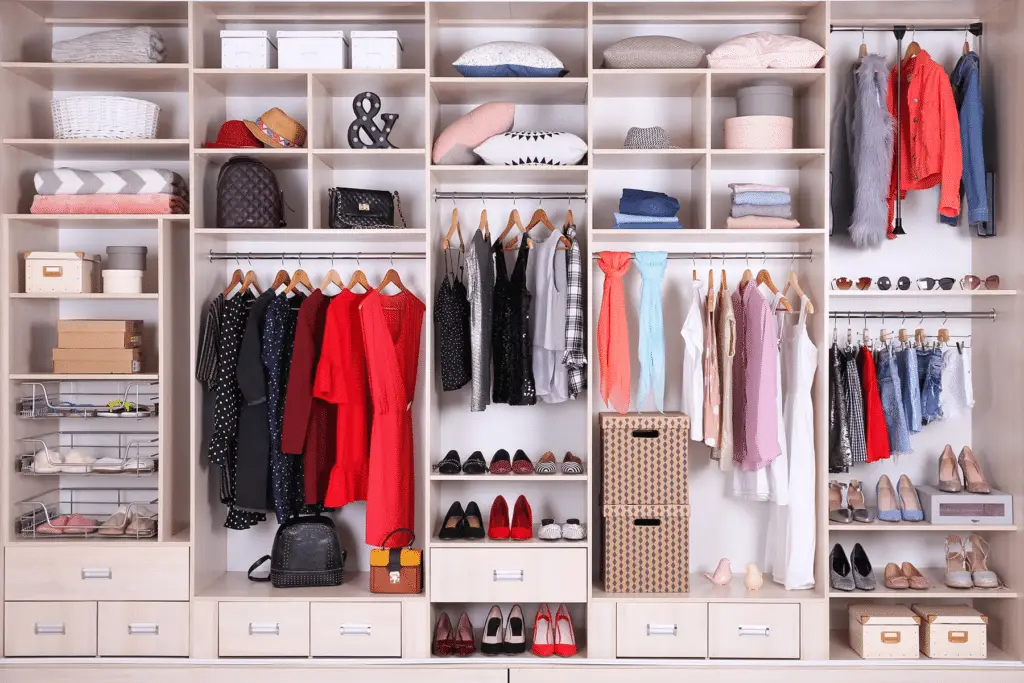
Conclusion
As you work to rebuild your closet, keep in mind that it’s not just the clothes you wear that matter, but also the stories they tell. Your style changes over time to show what you value and what you want to achieve. When you follow the advice in “How to Rebuild Your Wardrobe,” you’ll start to learn more about yourself and gain power.
Just as Palm Beach Gardens is a hidden gem waiting to be explored, your revitalized wardrobe holds untold potential. As you curate a collection that resonates with your authentic self, you’ll find that every piece becomes a meaningful part of your narrative. The journey towards a thoughtful and sustainable wardrobe rebuild is a rewarding one, filled with the joy of self-expression and the satisfaction of conscious choices.
So, stand in your newly organized closet with pride, knowing that you have everything you need to make any outfit that shows off your individuality. Your clothes should show how much you’ve changed and remind you that, like Palm Beach Gardens, beauty is in the journey, the little things, and the purpose you bring to it.



